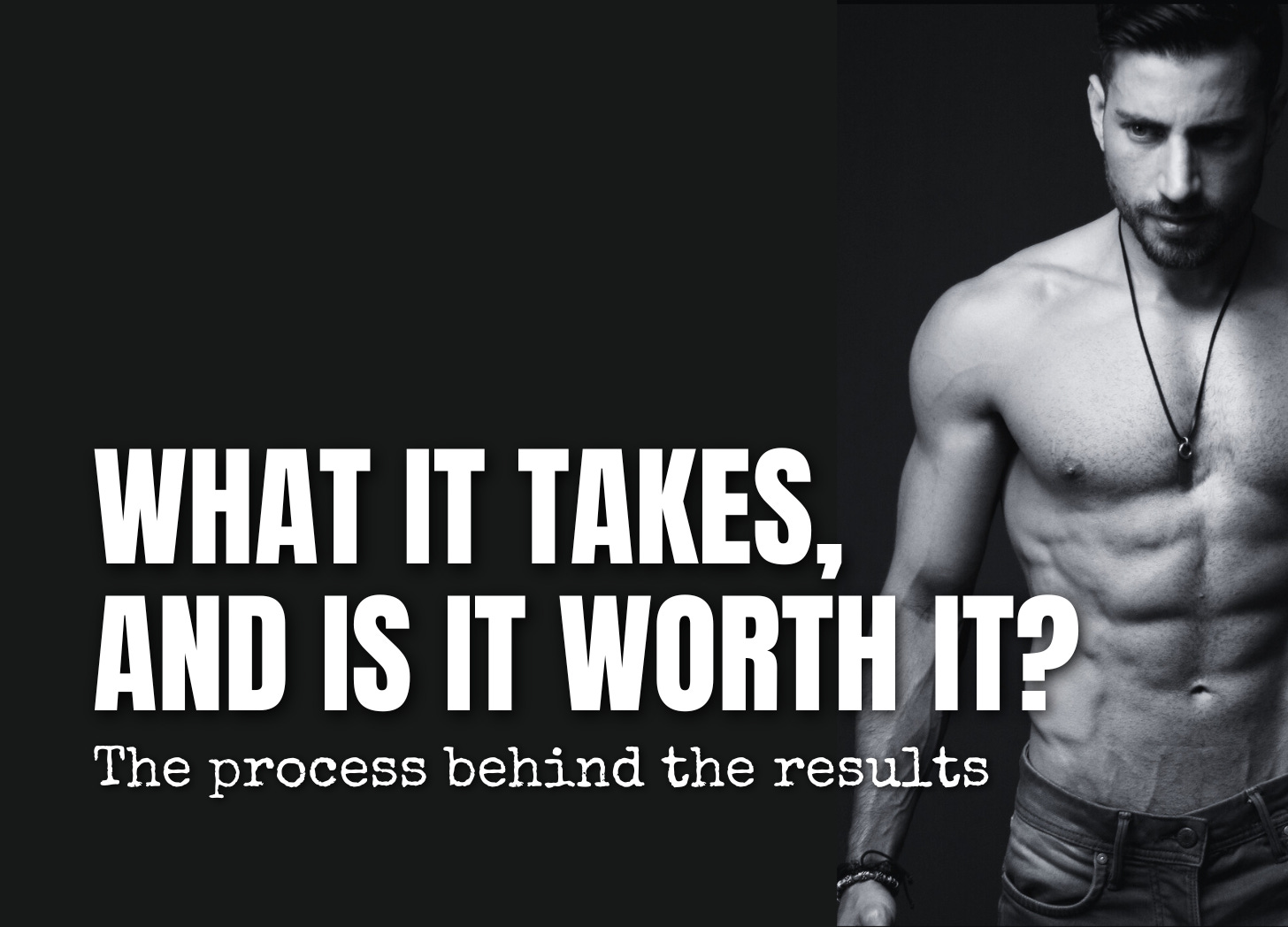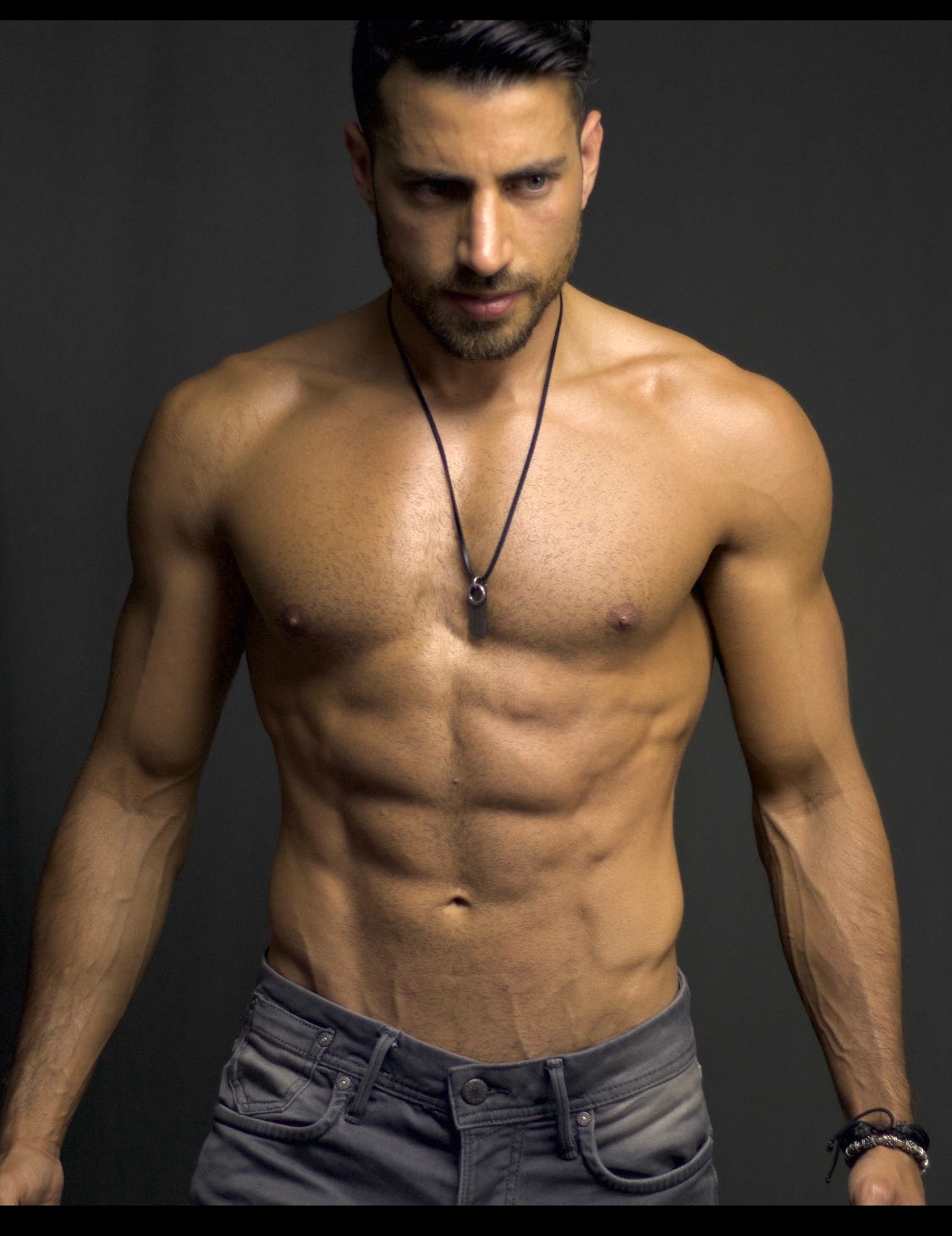The Process
A few years ago, a photographer friend wanted to do a fitness shot. I was living in Japan at the time and looking for a challenging project. “Give me five months,” I said.
What came after was madness. I began training twice a day every day, overhauling my diet, and making my life all about fitness.
The hardest part, however, was changing my identity so everything else could be possible. I had to ask myself, “What kind of person do I need to be to work out every day, stick to a strict diet, and make fitness the priority in my life for the next few months?” and more importantly, “Can I be that person?”
The way we see ourselves directs most of our behaviors and habits. Once I started changing my identity, all the right routines fell into place. But that wasn’t enough. Getting “photoshoot ripped” takes putting your body and mind through pains few people talk about.
Most of the time, we only see the glamour of the end result, not the process that makes it possible. I thought a fitness shoot meant getting in shape till your abs show, taking some pics with a good camera, and calling it a day. Fuck no.
The last month going into a shoot is tough. You keep training hard but restricting calories to a bare minimum to shed body fat. You feel weak, tired, and most of all, hungry all the time. Your sleep gets destroyed by the combo of demanding workouts, unhealthy low levels of body fat, and insufficient food. Your hormones get thrown off balance, too, and your mood goes all over the place.
Yet, you keep pushing. You keep training. You keep dieting.
Then comes Peak week…
Peak week is the last week before a competition or shoot. You cut whatever small amount of carbs were left in your diet and start manipulating water and sodium intake to get the dry look that allows your muscle definition to pop.
You had already pushed your body and mind to the edge, and now you tip them over.
You look malnourished...because you are. And that’s only one part of it. Not only do you look sick, you feel sick, too.
I began dreaming about food every night. In one of those dreams, I had done the shoot and went to have a religious experience with a burger and fries. Then (still dreaming), I remembered I had not done the shoot yet, so I had to spit out the food. When I woke up, I thought, “This is another level of messed up; why am I doing this to myself?” I didn’t think I was gonna make it.
My friend called me up to postpone the shoot for a week. “No fucking way!” I said, “We are doing this now. I can’t keep this on for another week.”
The morning of the shoot, you start loading on carbs. I ate chocolate bars, Nutella, gummy bears, and all the stuff I had been craving for months. It all tasted horrible, almost poisonous. After so long being off those things, your body doesn’t want them anymore. It’s the last joke of the whole thing. You used up every ounce of willpower to stay away from all of those foods, and when you’re finally allowed to eat them in bulk, they all taste disgusting.
To make things worse, days before the shoot, you cut most of your water intake. So you are also dehydrated, and after loading up on carbs for the shoot, your body starts begging for a drop of water. I never felt so thirsty in my life.
Despite all of it, the shoot goes well, and the pictures come out great.
But here’s something else people don’t talk about: The physique is only a part of it. The effect also comes from a good tan, a good camera, a good lens, good lighting, and, of course, a good photographer.
Also, you only look that good for a couple of hours. If you had seen me a day before the shoot, you would think I was sick. And if you saw me a few hours after the shoot, you wouldn’t be able to see my abs because of all the water retention caused by the carb loading and binge water drinking once the shoot was over.
People criticize promoting impossible standards. There are no impossible standards, only unreasonable efforts. Anyone can get “photoshoot ripped,” but what price are they willing to pay?
What I think is important is to be transparent about the process—the sacrifices behind the results. To show people what it takes, what’s behind the glamour of the finished product, so they can decide if it’s something they want to go through.
Is this healthy? No. Is it possible? Yes. Is it worth it? It was for me. I wanted to test myself and see if I could do it. In the end, it wasn’t about getting in shape or about the shoot. It was about becoming who I needed to be to achieve a goal. As Goethe once put it, “What you get by achieving your goals is not as important as what you become by achieving your goals.”
Is it worth it for you? Only you can answer that question.
In researching my book, “Learn. Improve. Master,” I came across a video of Usain Bolt training. At one point, he finishes a sprint and starts throwing up like it was just part of the process—and for him, it was. He said that when he trained the hardest during his career, he would throw up every day. You don’t hear that part of the story often. You only see Bolt on TV doing his signature pose after winning gold with a big smile, and think it’s all a breeze for him. No, it is grueling training after training, day after day for years to get to that moment. Is it healthy to take your body to those extremes? Probably not. Is it worth it? He believes so.
Anything worth doing is tough. So, the question is not how difficult it’s going to be but whether it’s worth your effort. If the answer is yes, the difficulty becomes secondary, and you do what you must.
“First say to yourself what you would be; and then do what you have to do.”—Epictetus




